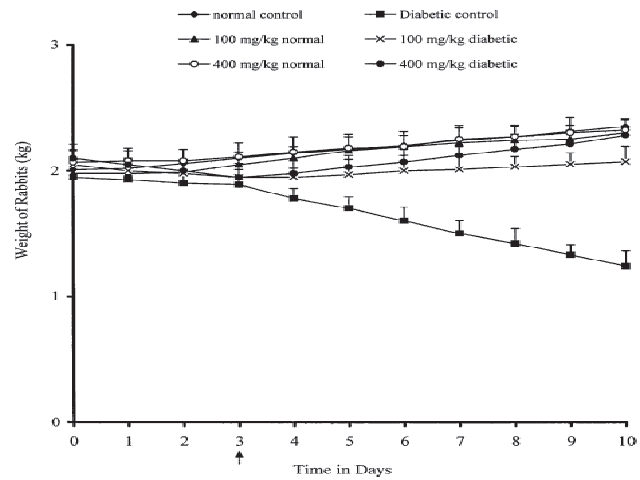Attenuation of Oxidative Damage in Alloxan Induced Diabetic Rabbits Following Administration of the Extract of the Leaves of Vernonia amygdalina
DOI:
https://doi.org/10.5530/ax.2011.3.13Keywords:
Diabetes mellitus, Free radical, Lipid peroxidation, Oxidative stress, Vernonia amygdalinaAbstract
Introduction: Diabetes is a disease that constitutes multiple sources of free radicals, thus oxidative stress is expected to have a double impact. Since oxidative stress is mediated by hyperglycemia-induced generation of free radical, it is supposed that compounds with hypoglycemic and antioxidative properties would be useful antidiabetic agents. Our study investigated the use of V. amygdalina as a potential hypoglycemic and antioxidative agent by testing its effect on the antioxidant biomarkers and lipid peroxidation. Methods: Dried leaves of V. amgydalina were extracted for 48 hrs and freeze dried. Acute toxicity was investigated in 25 rats. Thirty six rabbits were divided into 6 groups: groups I - III were normal; diabetes was induced in groups (IV – VI). Groups I and IV were normal and diabetic controls respectively. The animals were treated with aqueous leaf extract of V. amygdalina. Blood samples were collected and used for the study. Results: The reduction in body weight in the diabetic groups was regained following administration of the extract of V. amgydalina. The extract is considered safe and had little or no effect on blood glucose, MDA and GSH levels of the normal rabbits. Extract significantly reduced glucose and MDA concentrations but increased GSH levels in the diabetic rabbits. Similarly, the extract had no effect on the activities of SOD, CAT and GPx in normal rabbits, however in diabetic rabbits, the enzymes activities increased dose-dependently. Conclusion: This finding provides basis for the use of V. amgydalina as potential antidiabetic antioxidant agent and may be useful for its hypoglycemic property.
Downloads
Metrics





